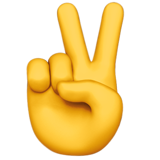Facial expressions and gestures in character drawing: how to express emotions through movement
Character drawing is an art form that emphasizes the expression of characters' emotions as well as their appearance. Gestures and facial expressions shape characters and plot. Let's talk about how important gestures and facial expressions are in character drawing and tips on how to use them correctly to make your characters more lively and convincing.

The importance of facial expressions in art
Mimicry is a facial expression that can convey various emotions such as joy, sadness, anger, and surprise. The correct use of facial expressions in character drawing makes the character more understandable to the audience, allowing them to instantly understand their feelings. The position of the eyebrows and the tilt of the lips can completely change the perception of the character.
For example, raised eyebrows and wide-open eyes can indicate surprise or fear, while frowning eyebrows and drooping corners of the mouth can indicate sadness or discontent. To create convincing and expressive images, it is important to study facial anatomy and understand how emotions appear on the face.
For example, raised eyebrows and wide-open eyes can indicate surprise or fear, while frowning eyebrows and drooping corners of the mouth can indicate sadness or discontent. To create convincing and expressive images, it is important to study facial anatomy and understand how emotions appear on the face.
Gestures and their role in expressiveness
Gestures are another important element that helps convey a character's emotions. They create an entire impression by complementing or enhancing facial expressions. Gestures can be conscious or unconscious, and they can convey more information than just words. For example, open palms can signify goodwill or trust, whereas clenched fists can signify anger or tension.
It is important to remember that gestures should match the emotion you want to express. Uncontrolled or inappropriate gestures can be misleading and distract the viewer from the main message. Therefore, it is important to think carefully about what gestures will be used in combination with facial expressions.
It is important to remember that gestures should match the emotion you want to express. Uncontrolled or inappropriate gestures can be misleading and distract the viewer from the main message. Therefore, it is important to think carefully about what gestures will be used in combination with facial expressions.

How to develop unique facial and gestural features of characters
Every character is unique, and their facial expressions and gestures should reflect their personality. Developing unique features requires observing and analyzing real people. Watch how people express different emotions and memorize them. This can help you create more realistic and lifelike characters.
You can also use artistic techniques, such as exaggeration, to emphasize a character's emotions. For example, if your character is very happy, you can make his smile much wider than in real life to emphasize his feelings of happiness. This makes your drawing more expressive and memorable.
You can also use artistic techniques, such as exaggeration, to emphasize a character's emotions. For example, if your character is very happy, you can make his smile much wider than in real life to emphasize his feelings of happiness. This makes your drawing more expressive and memorable.
Using references for facial expressions and gestures
One of the most effective ways to improve your facial expression and gesture creation skills is to work with references. To study movements, gather a collection of photographs of people showing different emotions. This will help you better understand how gestures and facial expressions convey emotions.
You can also practice drawing characters by copying references you find and then gradually adding your own details and styles. Don't forget that creating art that will be perceived as believable and touching by the audience is based on the study of reality.
You can also practice drawing characters by copying references you find and then gradually adding your own details and styles. Don't forget that creating art that will be perceived as believable and touching by the audience is based on the study of reality.

Practical tips for artists
When you are drawing a face and gestures, there are some important tips to keep in mind:
Learn anatomy: Understanding the structure of the face and body will help you create emotions that are more realistic and convincing.
Observe people: It will help you create your own characters if you regularly observe how other people express their emotions.
Don't be afraid to experiment to find what works best for your characters.
Apply exaggeration: Emotions are often more noticeable and memorable when they are exaggerated.
In character drawing, facial expressions and gestures are essential in conveying emotion and creating vivid, elaborate images.
Learning the different aspects of facial expressions and gestures, using references, and experimenting with unique features will help you develop your style and make your work more expressive. Remember, creating convincing characters is an ongoing process of learning and practicing. Keep at it, and your characters will become the real heroes of your stories.
Learn anatomy: Understanding the structure of the face and body will help you create emotions that are more realistic and convincing.
Observe people: It will help you create your own characters if you regularly observe how other people express their emotions.
Don't be afraid to experiment to find what works best for your characters.
Apply exaggeration: Emotions are often more noticeable and memorable when they are exaggerated.
In character drawing, facial expressions and gestures are essential in conveying emotion and creating vivid, elaborate images.
Learning the different aspects of facial expressions and gestures, using references, and experimenting with unique features will help you develop your style and make your work more expressive. Remember, creating convincing characters is an ongoing process of learning and practicing. Keep at it, and your characters will become the real heroes of your stories.

Basics of creating a casual character
An online course from a working studio with a unique payplan that we put into action every day with real customers!

Made with love by Redby Art.

Join our social networks to follow the latest company news
© All Rights Reserved. redbyschool@mail.ru


